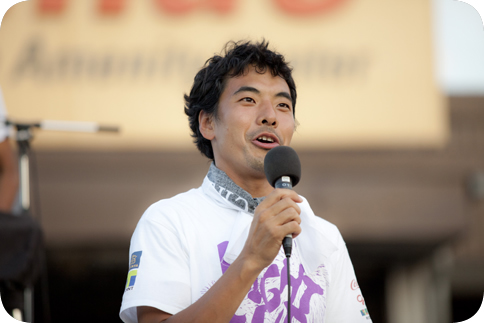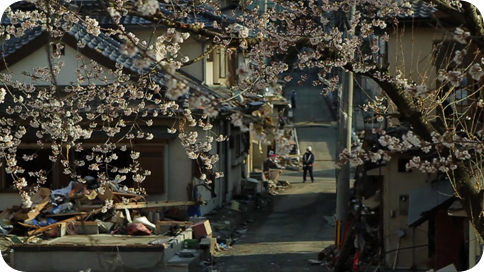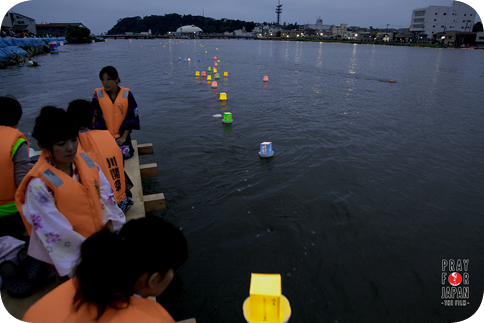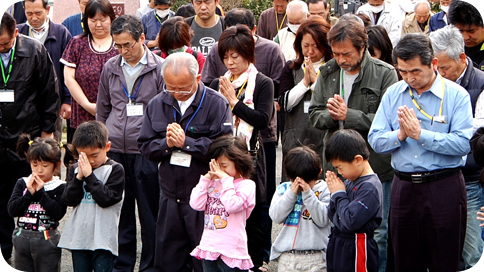Films on Post-Disaster Japan
By Ethan Segal, Associate Professor of History, Michigan State University
Study areas: Japan, natural disaster, earthquake, tsunami
The 3.11 disasters – the earthquake, tsunami, and nuclear power plant crises of March 11, 2011 that claimed over 20,000 lives, left hundreds of thousands of people homeless, and left many difficult problems (some of which have yet to be resolved) for the people of northeastern Japan – are surely among the most filmed tragedies of all time. Those seeking to learn more about the disasters and their aftermath can access online footage ranging from local residents’ camera phone videos to the recorded interviews of outside news organizations. Professional filmmakers (including those under review here) have drawn upon much of that footage to help people better understand the tragedies – in some cases, to support stories of recovery and rebuilding, and in others, to highlight mismanagement and lingering issues. As the four documentary films discussed in this essay reveal, there are many ways to remember and think about 3.11.
Light Up Nippon
Directed by Kensaku Kakimoto. 2012. 28 minutes. Japanese with English subtitles.

Light Up Nippon (2012) and The Tsunami and the Cherry Blossom (2011) are two shorter films that offer uplifting messages of people overcoming challenges and adversity. Light Up Nippon, produced by the Japan Foundation, focuses on the efforts of Takada Yoshitake and other volunteers to arrange for fireworks displays in several of the devastated communities on August 11, 2011, as a way of honoring the dead and buoying the spirits of the survivors. Mr. Takada and his fellow organizers faced many obstacles, including winning the approval of local residents and finding the money and resources needed amidst so many other demands for relief and assistance. As the film shows, although his proposal was initially rejected by one city official as being ill-timed and insensitive to the victims, other towns embraced the fireworks ideas, arguing that the people needed spiritual support and that the communities needed to appeal to young people in order to rebuild. The event went forward with great success, and similar fireworks displays have been held each August 11th in Japan as well as other countries.
The film depicts powerful scenes of post-tsunami destruction, but its overall message is uplifting. The story of Mr. Takada’s hard work, perseverance, and optimism leading to the successful event is clearly intended to mirror the hopes for the entire Tohoku region. It raises many issues that could be discussed in a classroom setting. For example, was it insensitive to plan for an event that some might see as celebratory (i.e., fireworks) just months after the devastation? Or, would Mr. Takada have helped more people if he had instead worked to rebuild homes and factories? One of the film’s benefits for teachers is its short run time (28 minutes), which allows for in-class screenings with time to spare for discussion. Although the narration is in English, the dialogue between Mr. Takada and the community members is in Japanese with English subtitles. The translations are, for the most part, sufficient, though there were a few places where some of the Japanese was left untranslated. As of this review, the film is available on YouTube, though the video is not of high quality.(1) In addition, there are several related websites that students can view, including some featuring interviews with Mr. Takada.(2)
The Tsunami and the Cherry Blossom
Directed by Lucy Walker. 2011. 39 minutes. Japanese with English subtitles.

The Tsunami and the Cherry Blossom is an award-winning independent film completed in the months immediately following 3.11. Director Lucy Walker had been planning to go to Japan to promote another of her films, but the project changed in the wake of the triple disasters.(3) As reflected by the title, the film has two distinct halves. In the first part, the focus is the tsunami and the resulting destruction and loss of life. It opens with a heart-rending scene of people on a hillside watching the tsunami carry away trucks, houses, everything – the footage demonstrates how quickly the ocean overwhelmed those who did not flee early enough. The subsequent interviews with survivors are equally powerful: one man who has lost everything, including his closest friend, says “I don’t need clothes, a house, anything – just give me his life back.” Other scenes focus on the recovery of bodies, the determination of some residents to return to their homes, and fears about radiation. Although the community is not explicitly named, references to Okawa elementary school and certain images reveal that the city is Ishinomaki.
Approximately 18 minutes in, the film’s focus shifts to the longstanding Japanese admiration for cherry blossoms. Dubbed over beautiful scenes of buds blooming are the voices of a cherry tree master saying that “nature has beauty and terror,” and other Japanese of all ages talking about the importance of cherry blossoms to Japanese culture. There is discussion of mono no aware, impermanence and religious thought, flower viewing, restraint in the aftermath of disaster, and the beauty of something existing as briefly as a flower. A poem from the Tales of Ise on the beauty of falling cherry blossoms in this grievous world seems to best capture the sentiment of the second half of the film, which also revisits some of the tsunami’s victims whom we met
earlier, now seemingly filled with hope for rebuilding and rebirth.
The Tsunami and the Cherry Blossom won an award at Sundance and was nominated for an Oscar. It is easy to understand why: the production values are high, and it came out only a few months after the disasters, surely making it one of the first documentary films to address 3.11. But for this reviewer, the pairing of the tsunami and the cherry blossoms comes across as somewhat forced. Clearly the intent is to provide an uplifting message of recovery, especially when we see some trees starting to flower in devastated areas and people talking about finding inspiration in the beautiful blossoms. While that message is effectively conveyed, the cherry blossom theme is overdone, and runs the risk of appealing to stereotypes when presented to a Western audience otherwise unfamiliar with Japan. Its short length (37 minutes) and high quality mean that it can easily be used in a classroom, but one would want to spend significant time talking with students about the filmmaker’s choice of cultural themes. Although a beautiful film, it is the least representative of the issues with which people in the devastated coastal communities have had to grapple.
Pray for Japan
Directed by Stuart J. Levy. 2012. 97 minutes. Japanese with English subtitles.

Pray for Japan (2012) and Nuclear Nation (2013) are two longer films which are much more effective at conveying the realities with which post-tsunami, post- Fukushima residents have had to struggle. Their longer run times (97 and 95 minutes each) allow them to delve into issues more fully, but also make it more difficult to screen these films in shorter-length classes.
Pray for Japan uses four themes to help convey the experiences of survivors from the city of Ishinomaki. The first theme, “Shelter,” looks at the refugees who fled to Minato elementary school and the challenges that its leaders faced in trying to ration food and water. “School” is told from the perspective of the principal and an art teacher from Ogatsu middle school, which had concluded its graduate ceremony only hours before the tsunami struck. In “Family,” a high school student, Itō Kento, shares the family’s pain at the loss of loved ones, especially his younger brother, Ritsu. “Volunteers” highlights a variety of individuals and groups who came to provide aid, including Pakistani volunteers from Nagoya. Each theme is presented in turn three times for about eight minutes each. They are clearly marked, each opens with poetry read by actress Suzuki Kyōka; and the same people speak in each segment, which should make it easy for students to follow and recognize the characters over the course of the film. Director Stu Levy was already in Japan at the time of the disasters and went to Miyagi as a volunteer with the non-profit JEN only days after the tragedy. He and his friends initially brought relief supplies, but upon seeing the devastation and talking with people there, decided to film what was going on. More information on the making of the film and the people featured in its stories is available on the helpful Pray for Japan website.(4)
There are many deeply moving scenes, ranging from the elation and relief of the middle school principal when, after eight days of frantic searching, he and his teachers are able to confirm that all 77 students from his school have survived, to the sorrow and guilt of Kento who voices the wish the tsunami had claimed his life rather than his brother’s. Despite the many images and stories of destruction, the film’s overall message is positive, expressed best by the segments on volunteers. The stories of how and why people came from all over Japan (and around the world) to help the survivors clean up and begin putting their lives back together is inspiring. It also means that the film might be usefully screened in classes that deal with volunteer relief groups or perhaps even service learning, regardless of whether or not they have a Japan focus. My only caution against using this film to teach 3.11 is that it does not deal with the Fukushima nuclear crisis or radiation in any significant way. But if Pray for Japan is used in conjunction with other materials that address the nuclear issue, then it will make for a fine teaching tool.
Nuclear Nation
Directed by Atsushi Funahashi. 2012. 96 minutes. Japanese with English subtitles.

Nuclear Nation is one such film that educators might consider for a focus on the Fukushima aftermath. From the film’s ominous opening – dark silence followed by stark images of the damaged nuclear power plant set to sounds of a haunting wind – to the painful stories of evacuees who cannot return home, Director Atsushi Funahashi clearly documents the tragedies that befell the former residents of Futaba District, one of the communities that has been made unlivable due to radioactivity. Much of the footage was shot at an abandoned high school in Saitama Prefecture to which many of the district’s residents (as well as the town hall) relocated when they were forced to evacuate. Among the many stories shared in the film are those of Nakai Yuiichi, a young man who was not allowed to return to Futaba to look for his mother’s body, and Suzuki Shizuo, a former plant worker who, together with his infirm wife, struggles with their relocation to a distant public housing project. But the most powerful story is that of Futaba’s mayor, Idogawa Katsutaka. Originally a supporter of nuclear power, he becomes an outspoken critic as he fights to keep his community together and for faster relief from the government.
More than in the other films under review, the filmmakers of Nuclear Nation have a critical agenda: to show the terrible damage to lives and community wrought by the disaster and exacerbated by inadequate responses from TEPCO and the government. A number of smart directorial decisions help convey that message effectively. First, Nuclear Nation uses only a minimal amount of narration. There are some still scenes that display only text as background information to allow viewers to better understand the testimony that follows, but there is no narrator. Not only are we denied the reassuring comfort of a familiar narrator’s voice, but also most of the victims’ comments are responses to questions that we never hear posed. The effect is somewhat unsettling and utterly appropriate.
Second, the film does not hesitate to show how hurt and angry the former residents of Futaba are. In one scene, refugees watch with disgust as TEPCO President Masataka Shimizu offers apologies on television. Their sharp criticisms of the insincerity of TEPCO officials, and their lament that all they ever had has been ruined, convey their grief. In another scene, residents complain that no one ever tells their stories on television. Later, inside the evacuation zone, we meet Yoshizawa Masami, a farmer who has chosen to remain with his cattle rather than flee. He guides us to neighboring farms where we see the carcasses of animals that starved to death after being abandoned by their owners. He stayed behind because he had nowhere to take his herd, he says, and like him, the cows are protesting the nuclear accident too.
Third, the filmmakers highlight irony and hypocrisy. For example, we see residents in the courtyard of the school-turned-shelter listening to a military band. The band leader sings the theme song of the Tora-san movies, beloved especially by the elder generation who make up his audience, seemingly oblivious to the irony of lyric “I’m crying on the inside” as the camera pans across the sad faces in his audience. Or, in one of the most disheartening scenes of the film, we see government officials [including Banri Kaieda and Hosono Goshi(5)] make speeches before the assembled mayors of the towns hosting nuclear power plants and then promptly leave the meeting before any of the mayors can respond. Mayor Idogawa delivers a blistering critique of the nuclear power industry and the government, but none of the officials – who have supposedly come to the session to engage in dialogue – are there to hear it.
Nuclear Nation is a powerful film that should promote good discussion among students – not only about the Fukushima aftermath, but about nuclear power more broadly. As with the other films discussed in this essay, the filmmakers have a supporting website with additional information.(6)
Each of the four films under review here has unique merits that make it worthy of consideration for classroom use. Some, such as Light Up Nippon, might be seen as inspirational due to their focus on perseverance, recovery, and bolstered spirits. Others, such as Nuclear Nation, are much darker, sharing the pain and frustration of those who have lost so much. Seen together, they effectively convey the varied and complex issues that remain in the wake of the 3.11 disasters.
Ethan Segal is associate professor of History and Asian Studies at Michigan State University and the author of Coins, Trade, and the State: Economic Growth in Early Medieval Japan (Harvard, 2011). As a scholar with professional and personal connections to northeastern Japan, he has closely followed post-3.11 recovery efforts in the region and has spoken about them on several university campuses. Click here to read his comments in The New Republic on the one-year anniversary of 3/11.
1. http://www.youtube.com/watch?v=FDB1znvWf6E&feature=youtu.be, accessed March 2014. Presumably the DVD (available for purchase) is of higher quality.
2. For example, see:
http://www.wochikochi.jp/english/topstory/2012/05/hanabi-music.php and
http://india-japanpassagetonextgen.blogspot.com/2012/03/interview-withyoshitake-takada.html, accessed March 2014.
3. http://cinemawithoutborders.com/conversations/2768-lucy-walker-thetsunami-and-the-cherry-blossom.html, accessed April 2014.
4. http://prayforjapan-film.com, accessed April 2014.
5. At the time, Kaieda was Minister of Economy, Trade, and Industry, and Hosono was Nuclear Crisis Minister.
6. http://nuclearnation.jp/en/, accessed April 2014.
Last Updated: May 9, 2014

